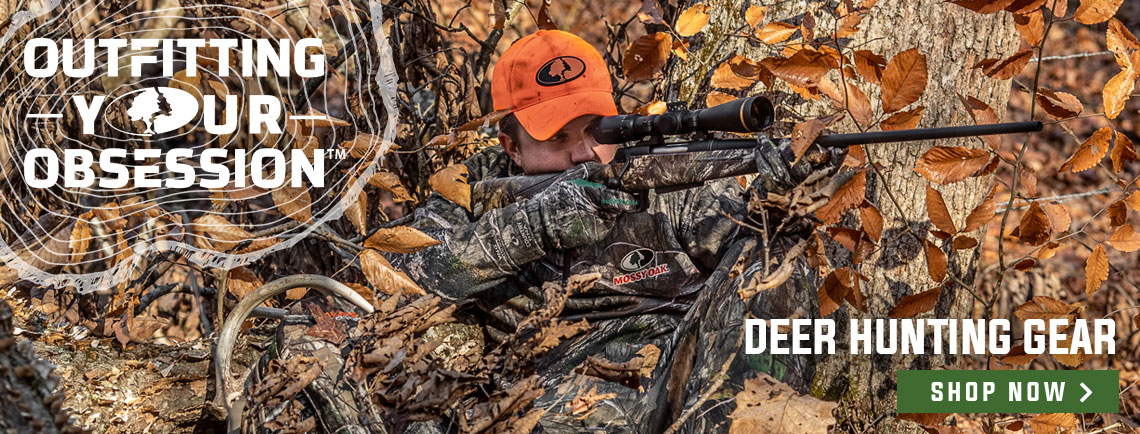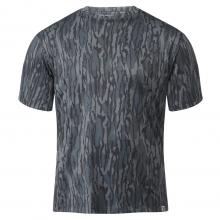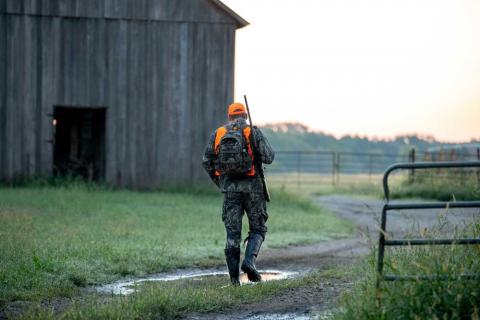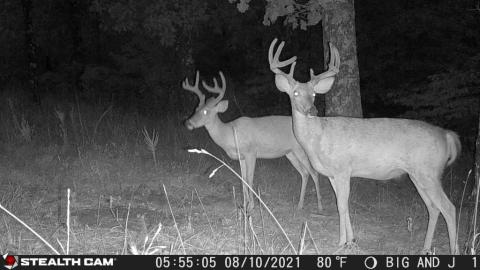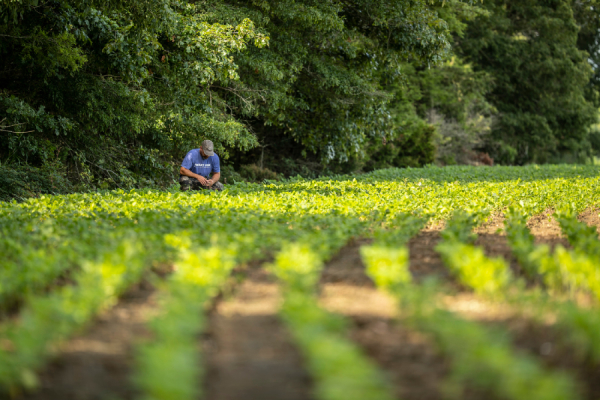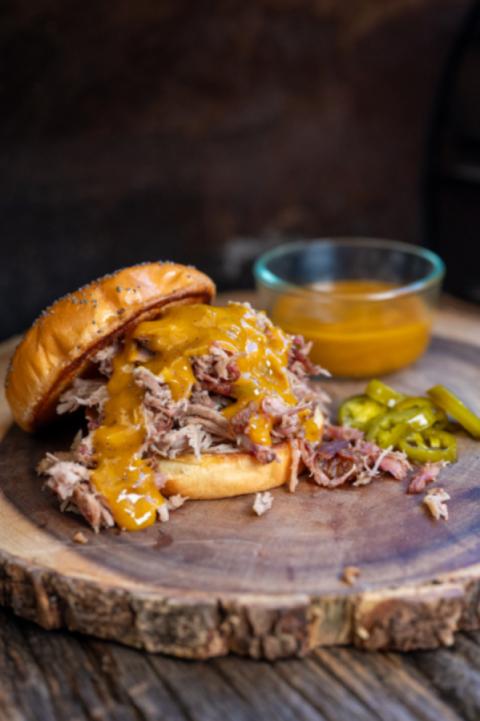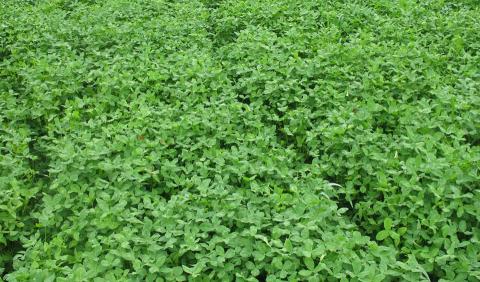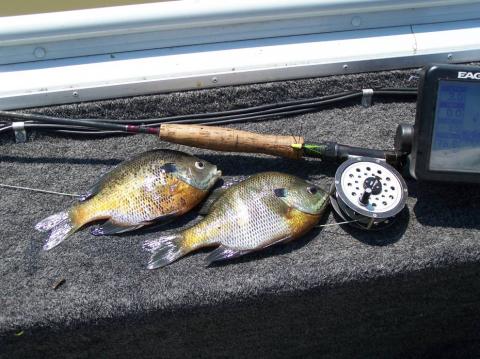by Bob Humphrey | Humphrey is a certified wildlife biologist who, in addition to studying deer, has hunted them across North American for over 40 years.
Before heading out to the blind, be sure to familiarize yourself with local deer activity, such as their feeding habits. A typical deer feeds twice per day, so that's the time you'll see deer movement in the forest. At other times, they tend to stay out of sight, retreating to their bedding areas or other haunts. Also, deer don’t waste time scouting around for food. They return to the food sources they know. It’s always a good idea for you to observe the ways your local deer move before you head out, rifle in hand.
How Does Moon Phase Influence Whitetail Behavior?
Since the earliest hunters and gatherers, people have tried to pinpoint deer behavior patterns. Environmental influences, like the time of day, the weather and the season, all affect deer movement. Other things like barometric pressure and the phase of the moon could also make a difference when you’re tracking your buck.
What Are the Phases of the Moon?
Sunlight and the earth’s shadow determine the moon’s phase. Depending on the positions of the moon and the earth, the sun lights up all, part or none of the moon’s surface. These phases form a pattern that repeats itself every 29 days or so. Of the 12 phases of the moon, the main ones are:
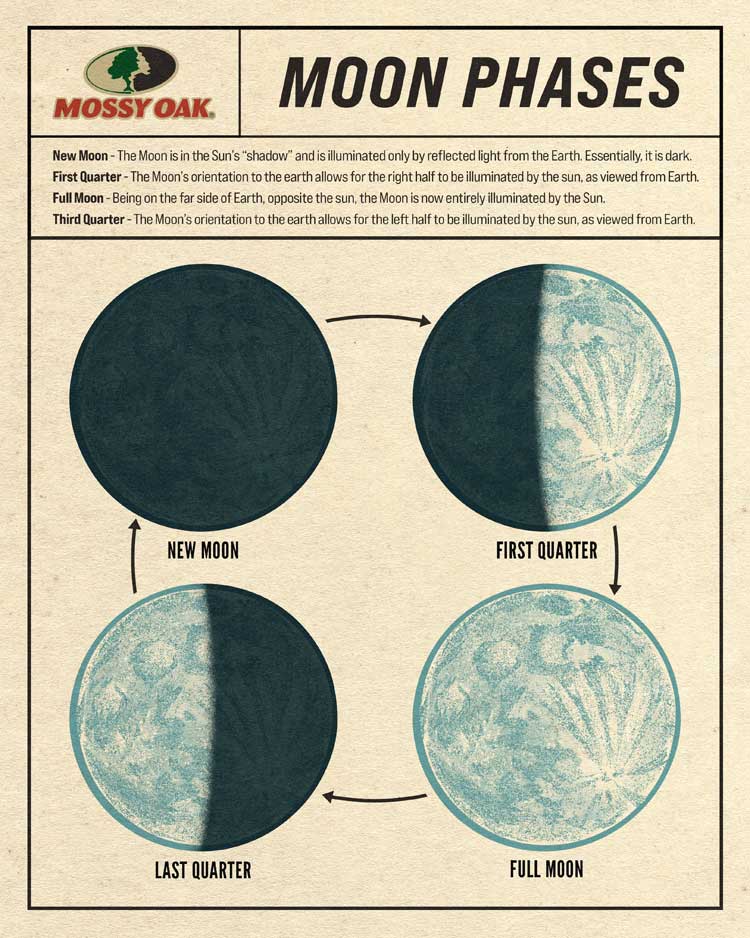
- New moon: No light
- First quarter: Right half is sunlit
- Full moon: Sun illuminates the entire face
- Second quarter: Left half is sunlit
During the time between a new moon and a full moon, the light gradually spreads across the lunar surface in a process called waxing. Between the full and new moon, the light wanes or gradually lessens.
How Does the Moon Affect Hunting Season?
It depends on who you ask. Scientifically speaking, the phases of the moon have no influence on doe or buck movement. Talk to any seasoned hunter, though, and you just might get a different story.
During the full moon, for example, hunters have observed that deer seem to be more active at night. Better visibility in moonlight makes spotting and tracking whitetails easier, and chances are, you'll see more of them.
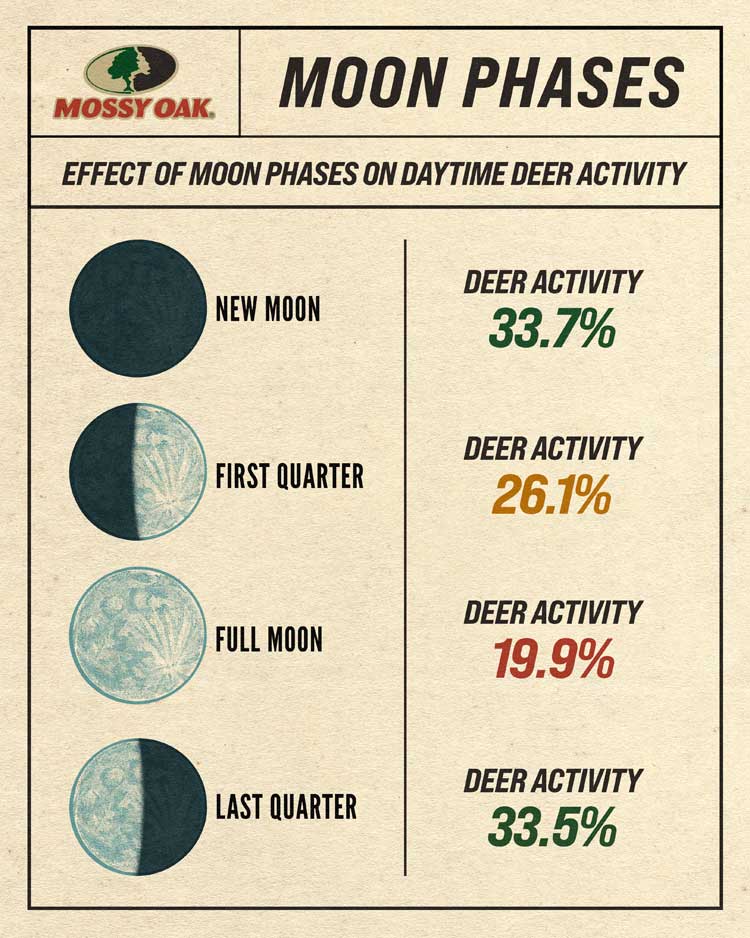
In contrast, research studies show that sunrise and the time when the moon rises remain peak feeding times for whitetails. This means that in any phase of the moon, these are the windows when you have the best shot at a successful hunt.
The reverse tends to be true during the new moon phase. According to trail camera studies, feeding during daylight hours becomes more common when the night skies are dark. If you see fewer whitetail deer at dusk and during the night, this could be the reason.
Does the Moon Influence the Rut?
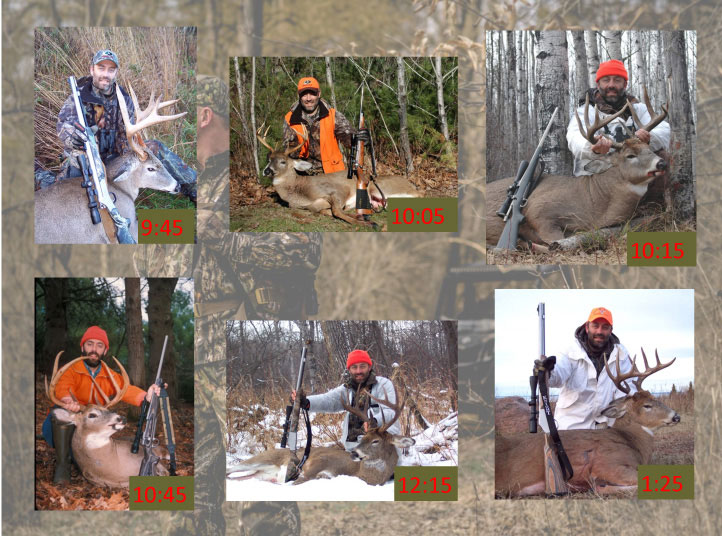
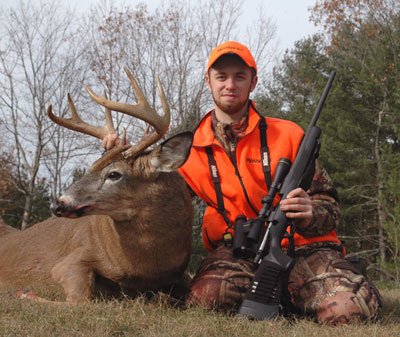
the same ladder stand, my son has taken a buck while it
was aggressively tending a doe, all between
November 15-18.
Autumn's shortening days, often accompanied by a cold front, lead up to rutting season. It's a proven scientific fact that this seasonal change triggers a deer’s reproductive system. It also marks a time when even mature bucks may let their guard down while they enter courting mode. So in a way, the rut provides hunters with a competitive edge.
As a hunter, you probably wonder how the phase of the moon comes into the mix. In this case, the influence of the moon appears minimal at best. The change of season is the main trigger for the rut, and it occurs during the same period each year per geographic location, whether the moon is full or new.
Trust Your Experience for Your Next Hunt
Success in bowhunting and rifle hunting alike depend upon experience and skill. If the glimpse of an antler makes your heart beat faster, you have the motivation it takes to stalk the big bucks. It’s important to trust your own observations and instincts as you seek big game because every deer hunting location offers its own unique challenges and rewards.
